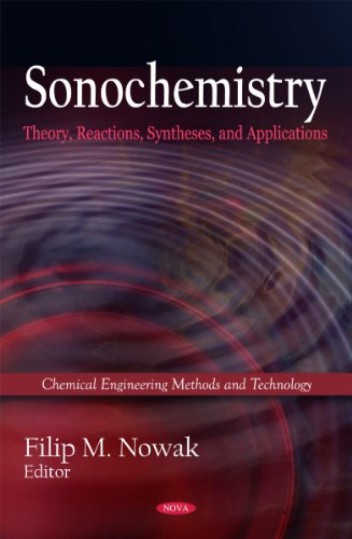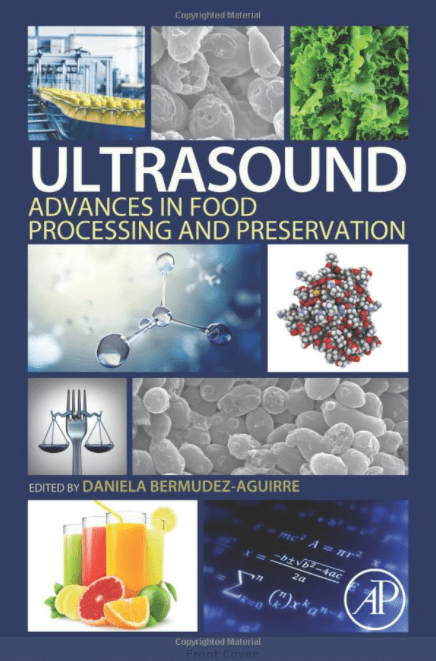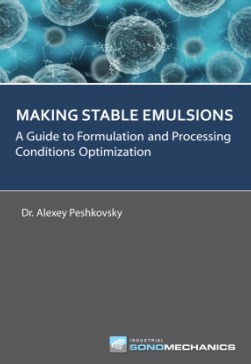Books
ACOUSTIC CAVITATION THEORY AND EQUIPMENT DESIGN PRINCIPLES FOR INDUSTRIAL APPLICATIONS OF HIGH-INTENSITY ULTRASOUND (Physics Research and Technology) [Paperback]
Abstract
A multitude of useful physical and chemical processes promoted by ultrasonic cavitation have been described in laboratory studies. Industrial-scale implementation of the high-intensity ultrasound has, however, been hindered by several technological limitations, making it difficult to directly scale up the ultrasonic systems in order to transfer the results of the laboratory studies to the plant floor. High-capacity flow-through ultrasonic reactor systems required for commercial-scale processing of liquids can only be properly designed if the energy parameters of the cavitation region are correctly evaluated. Conditions which must be fulfilled to ensure an effective and continuous operation of an ultrasonic reactor system are provided in this book.
Book is available at: Amazon.com
INDUSTRIAL-SCALE PROCESSING OF LIQUIDS BY HIGH-INTENSITY ACOUSTIC CAVITATION: THE UNDERLYING THEORY AND ULTRASONIC EQUIPMENT DESIGN PRINCIPLES [Hardcover]
Abstract
A multitude of useful physical and chemical processes promoted by ultrasonic cavitation have been described in laboratory studies. Industrial-scale implementation of high-intensity ultrasound has, however, been hindered by several technological limitations, making it difficult to directly scale up ultrasonic systems in order to transfer the results of the laboratory studies to the plant floor. High-capacity flow-through ultrasonic reactor systems required for commercial-scale processing of liquids can only be properly designed if all energy parameters of the cavitation region are correctly evaluated. Conditions which must be fulfilled to ensure effective and continuous operation of an ultrasonic reactor system are provided in this chapter, followed by a detailed
Book is available at: Amazon.com
FROM RESEARCH TO PRODUCTION: OVERCOMING SCALE-UP LIMITATIONS OF ULTRASONIC PROCESSING [Paperback]
Abstract
Industrial ultrasonic processors incorporate significantly larger ultrasonic horns than laboratory ones, enabling them to generate higher-volume cavitation zones and, therefore, process substantially more material per unit of time. Direct scale-up requires the same intensity of cavitation to be applied in the production environment as was originally used in the laboratory. This means that in order to achieve reproducible results after the scale-up, horn amplitudes in the laboratory and industrial processors must be maintained at the same high level. Dr. Peshkovsky’s chapter explains how this can be achieved with ISM’s patented Barbell HornTM Ultrasonic Technology (BHUT) – an advance with groundbreaking potential for the food and beverage industry.
Book is available at: Amazon.com
Ebooks
MAKING STABLE EMULSIONSA Guide to Formulation and Processing Conditions Optimization
Abstract
One of the biggest challenges faced by scientists and process engineers in a wide range of industries is how to achieve stability of products that combine oil and water. In this eBook you will learn about:
- Classification of emulsions
- Different types of stability
- Emulsion instability pathways
- Preferred production technologies
- Optimization theory
- Experimental procedures





